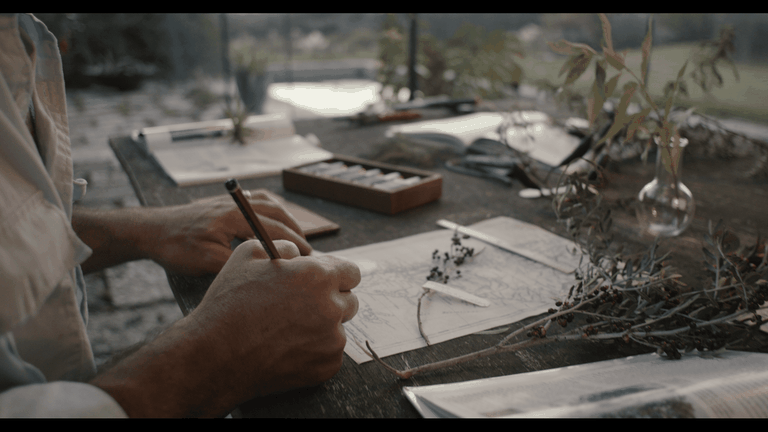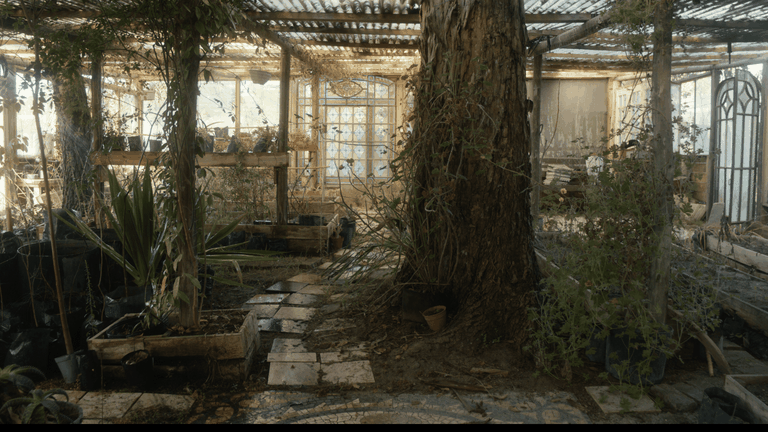https://www.lifegate.it/impatto-profumo
- |
- The sustainability factor increasingly comes into play when choosing a fragrance:in the last two sales of sustainable cosmetics have grown by 16.4% over the years.
- In this sector, several aspects in addition to emissions must be kept on the same level:The consumption of soil, water and the protection of biodiversity, because many ingredients they come from nature.
- 90% of a fragrance's impact comes from its packaging.A refillable perfume cuts emissions up to 5 times compared to a normal product.
- In the debate on natural vs synthetic ingredients of perfumes there is no definitive judgment on which ones are more or less sustainable.On the one hand, natural molecules are biodegradable and often support small economies in the Global South.On the other hand some synthetics have allowed to replace animal-derived ingredients.
Smells remain stored in the memory in a completely involuntary way.Our predilection for a perfume is not random, but it is difficult to reconstruct the path that always leads us towards a certain olfactory family (floral, citrus, aromatic, powdery, oriental...).And more and more in choosing a perfume, as well as a cosmetic, the factor intervenes sustainability and not just that of naturalness.
This is confirmed by data from Cosmetica Italia, the national association of cosmetic companies, on the entire sector:in the last two years, sales of sustainable cosmetics have grown by 16.4 percent compared, for example, to 8.1 percent of those with only natural/organic connotations.Consequently, the world of perfumery is moving to satisfy this market demand and to adapt to the new standards that the times impose on us.Attention to energy consumption, the protection of biodiversity connected to raw materials and the great theme of packaging and of recycling are the biggest challenges this sector faces.
High or low impact:the secret is in the box
So what is the impact of our perfume bottle?“It is difficult to answer without a detailed analysis such as that of the product life cycle (LCA),” says Alessandro Strada, business development lead for cosmetics at Quantis Italia, one of the largest consultancy companies in the field of sustainability for cosmetics.“At a system level, however, there is a lack of data collected on a large scale.In our research we estimated that global greenhouse gas emissions from the cosmetics industry are 1.5 percent of the total.Not a significant number in absolute terms.However, we know that in this sector several aspects in addition to emissions must be kept on the same level:the consumption of soil, water and the protection of biodiversity, because many ingredients come from nature".
“What we must also consider,” continues Strada, “is that 90 percent of the impact of a fragrance comes from its packaging.Refillable perfumes allow you to reduce greenhouse gas emissions by avoiding the purchase of new bottles. A refillable perfume cuts up to 5 times emissions compared to a normal product".

The designer Thierry Mugler was certainly not aware of these data when he launched it in 1992 the first refillable perfume, a small revolution watched with curiosity, but remained an isolated case for a long time.Today many others are following his example, from Giorgio Armani to Prada, and there are many solutions implemented by the perfume industry:the solid perfumes, the less elaborate and in compostable materials, the collection of empty bottles in store for recycling.“Every year 120 billion packages are produced by the beauty and personal care industry, but only 50 percent is recycled,” the report says Make up the future of Quantis.
What's inside the bottle
A world of natural or synthetic molecules opens up on the formulation of a perfume."Where natural is not synonymous with sustainable”, Strada immediately clarifies.“The determining factor of an ingredient's environmental performance is its impact throughout its life cycle, up to disposal.Natural ingredients can have a high impact in terms of emissions and land and water use, especially when significant resources are needed to produce a very small amount of product.In these cases, synthetic materials can offer a valid alternative with a lower impact", states the Make up the future report.
“To obtain a small dose of sandalwood or cedarwood oil are needed twelve hours of steam at high pressure:a considerable amount of energy,” he explains Julian Bedel, founder and creator of Fueguia 1833 fragrances.
Julian Bedel works in the field of so-called artistic perfumery, where each bottle is numbered and produced by the creator himself.Very few “noses” – i.e. perfume creators – have as much knowledge about raw materials and their sustainability as Julian Bedel, who manages his company with a vertically integrated supply chain, in order to have greater control over the final product, from raw materials of the wood fragrances of the boxes (which comes from processing waste of the furniture industry).
The perfumes of the big brands are instead made by a few very large manufacturing companies, whose names are unknown to the general public (Firmenich, Givaudan, L'Oréal group, Coty...) and then labeled by the brand that commissioned it through licensing contracts .Within these companies, the "noses" who create the fragrances have a wide but still limited selection of ingredients at their disposal:Bedel, on the other hand, creates a perfume every time according to his personal inspiration, looking for new notes from time to time.
“I gave up many ingredients because I couldn't obtain them in a sustainable way”, he says in the Milanese boutique behind the Galleria Vittorio Emanuele, “our advantage on sustainability is that we are a small company and have limited production volumes compared to the big brands”.
Natural vs synthetic
It is he who tries to explain the complex dichotomy natural vs synthetic:“Natural components require that there is a plant at the base, which can be harvested or cultivated in different ways, on an intensive basis or by small local communities, with which I work for example,” explains Julian Bedel.
“Do you want the plant or do you want the essential oil?How are these plants harvested or grown?Where do you have to have them shipped from?How is the oil made?For each of these questions you must have an answer, in a supply chain that can be long and not always clear.The advantage of natural products is that we know they are biodegradable and, with ethical and responsible sourcing, they are a source of economic sustenance for these communities" he concludes.

Incense, vanilla, spices, exotic woods and flowers are in fact a wealth in many places in the South of the world that depend on these crops, some also very sought after and valuable for perfumery.
“On the other side there is the group of synthetics, incredible and horrible at the same time,” jokes Bedel.“Synthetic molecules can also be created from something natural, wood or sugar for example.The positive fact is that some synthetics have arisen to replace ingredients animals, like theambergris of the sperm whale – coming from the animal's digestive system – or the musk/musk from the glands of the musk deer.”
The category of synthetic musks is made up of different types of molecules, some of which - polycyclic musks - are quite controversial.Musks are linked to the fragrances indicated in cosmetics and detergents as "white musk", often with misleading images representing white flowers or plants, but it is a synthetic smell:there is no botanical species of white moss.
Given its use for several decades, it is par excellence the smell that we associate with clean, freshness.“I have chosen not to use the so-called polycyclic musks, due to some studies that indicate their accumulation in the body and in the environment.Obviously, definitive studies are needed but I prefer the precautionary principle,” underlines Bedel.
Experiments with algae and wood chips
Of the 3 thousand ingredients of the Fueguia 1833 perfumes, the majority are natural and are kept in the Milanese laboratory where they are produced.Many derive from South American plants that Bedel gets to know on trips to his country, Argentina, or Uruguay where he runs a small botanical research center.

“Obviously, for our production volumes, one kilo of a specific plant is enough, not a hundred,” continues Bedel.“Thanks to my intermediaries we manage everything with the communities of growers or collectors, who know all the botanical species well and want to preserve them”.Today he is conducting the most interesting experiments in Milan with the idea of doing upcycling, that is, using second-hand ingredients, such as coffee grounds (already used in their Arabica perfume) or i carpentry shavings company that produces the boxes:“With new technologies, unthinkable odors can be extracted,” he says.
The last ingredient in the bottle is ethanol, ethyl alcohol which constitutes the main part of the formula.It can be about bioethanol, derived from the fermentation of potatoes, sugar cane, sugar beet, materials which therefore involve an agricultural aspect to be supervised in terms of sustainability.Or, as in the case of the New York startup Air company, it is about ethanol created from Co2 emissions.
Their Air perfume is literally created from the air (there are in every bottle 56 g of Co2).A similar technology was developed by the American company Lanzatech, partner of Coty, a cosmetics production giant:By 2023 they aim to use ethanol created in this way in most of their perfumes.
In their case, carbon monoxide and dioxide molecules produced by heavy industry are captured, while another interesting frontier is ethanol created by micro algae or from agricultural waste like the peels.
Behind a fragrance that transports us to old memories there is therefore a complex world for those consumers sensitive to the topic of sustainability.Although cosmetics is a sector that contributes less to global emissions, it is taking the demands of an increasingly attentive market very seriously.
Natural does not necessarily mean sustainable:preserving raw materials and biodiversity must become one of the central commitments for all those industries that source ingredients from nature.Whether it transforms them into a cotton towel or magically makes them precious scented molecules.
